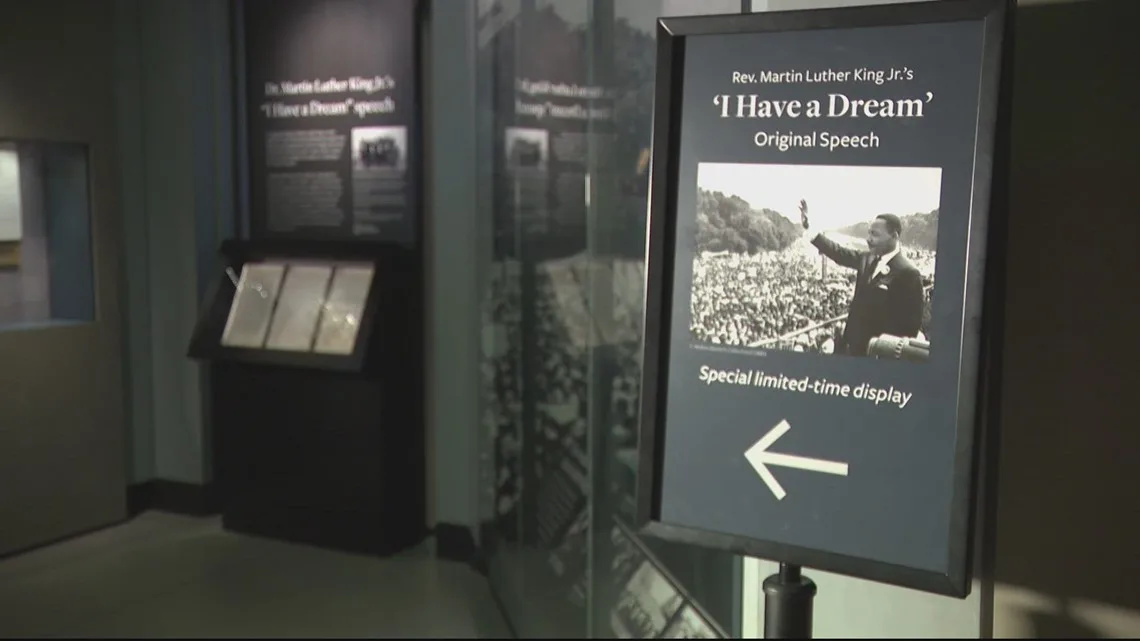
You can now view Dr. Martin Luther King, Jr.’s original ‘I Have a Dream’ manuscript at the National Museum of African American History and Culture.
WASHINGTON — It’s been 60 years since Dr. Martin Luther King, Jr. delivered his iconic “I Have a Dream” speech on the steps of the Lincoln Memorial.
On Saturday, thousands will again gather on the National Mall to commemorate that anniversary and continue the fight to realize his dream.
“In many ways, we’re still addressing some of the same issues that the march had initially addressed,” National Museum of African American History and Culture museum curator Aaron Bryant said.
The actual anniversary of the original march is Aug. 28. but as visitors prepare for this Saturday’s rally, Bryant said it’s important to remember what it took to get to this point.
“Birmingham in 1963, the bombing at the 16th Street Baptist Church, years of legislation and even litigation…” he said.
All of that is memorialized in the NMAAHC’s “Defending Freedom, Defining Freedom” exhibit.
It’s also now home to an extra special page of history–the original manuscript that Dr. King used for his “I Have a Dream” speech.
“You’ll be surprised to find out that the most popular and well known parts of the speech, he actually improvised, [like] the content of one’s character, and Black children and white children playing together, and this whole idea of creating a multiracial America,” Bryant said.
Those portions were not written and were just improvised from the energy of the 250,000-person crowd.
“If you look at the photographs, it’s not just about protest administration, it really is about celebration…[of] Americans from across the country coming together to make positive social change,” Bryant said.
He said there certainly has been a lot of change in the last 60 years — change that’s still in the memories of people who are alive — but there’s still more progress to be made.
“You have to say to yourself, you know we might be confronted with a lot of challenges today, particularly as it relates to justice, equity and democracy, but if they can do it then with the limited resources and advantages that they have, [then] with all the advantages we have, what small changes can we make in our community,” Bryant said.
You can view Dr. King’s manuscript now through September 18.
For more information on the exhibit, click here.
For more information on Saturday’s March on Washington, click here.

